plants and humans test 2
1/130
There's no tags or description
Looks like no tags are added yet.
Name | Mastery | Learn | Test | Matching | Spaced |
|---|
No study sessions yet.
131 Terms
what is photosynthesis?
how plants use sunlight to produce their food & how they use sunlight energy to change it into the energy stored in the bonds of glucose
what is cellular respiration?
taking the energy stored in the bonds of the glucose and break it down to produce cellular energy (ATP)
what is the photosynthesis equation?
6CO2 + 6H2O + sunlight------> C6H12O6 + 6O2 (carbon dioxide + water + sunlight(reactants) -----> glucose + oxygen(products))
where does photosynthesis occur?
in the chloroplasts of the cells
what is pigment?
substance that gives off a color due to light absorbance & reflection
what is chlorophyll a?
main pigment for photosynthesis, mainly absorbs light in the red & blue areas of the light spectrum
what is white light?
violet, indigo, blue, green, yellow, orange, red
what is chlorophyll b?
associated pigment for photosynthesis absorbs in the red-orange & blue areas of the light spectrum
describe chloroplasts.
double membranes, granum (stack of the thylakoids), thylakoids (quarter shaped disc), & stroma (fluid inside the chloroplasts)
what are the stages of photosynthesis?
light-dependent & calvin cycle/light-independent
describe the light-dependent stage of photosynthesis.
light energy splits water, resulting in oxygen, ATP is formed, and occurs in the thylakoids
describe the calvin cycle/light-independent stage of photosynthesis.
carbon dioxide enters the leaf, produces the sugars, and occurs in the stroma
cellular respiration formula
C6H12O2 + 6O2 ------> 6CO2 + 6H20 + Energy (ATP) (glucose + oxygen(reactants) -----> carbon dioxide + water + ATP(products))
where does most of the cellular respiration occur?
the mitochondria
describe the mitochondria.
double membranes, cristae, and mitochondrial matrix
what is a cristae?
folds in the inner membrane of mitochondria
what is the mitochondrial matrix?
inner most compartment of a mitochondrion (fluid)
what are the 2 types of cellular respiration?
aerobic and anaerobic
what is aerobic cellular respiration?
requires oxygen
wha is anaerobic cellular respiration?
does not require oxygen
what are the steps of cellular respiration?
glycolysis, krebs cycle/citric acid cycle, electron transport chain
describe the glycolysis step of cellular respiration.
sugar splitting, glucose splits into 2 pyruvate molecules, and happens in the cytosol
describe the citric acid/krebs cycle step of cellular respiration.
occurs in the mitochondrial matrix, glucose is oxidized to carbon dioxide, and requires oxygen
describe the electron transport chain step of cellular respiration.
occurs on the inner mitochondrial membrane, requires oxygen, and produces most of the ATP
what is the transition step of cellular respiration.
when 2 pyruvate molecules are changed into 2 acetyl coenzyme A molecules
what is a stimulus/stimuli?
something that happens that causes an activity
what are some examples of stimuli?
drought, bugs, not enough sunlight, weather, touch, more nutritious soil
what are statocytes?
gravity sensing cells in the root
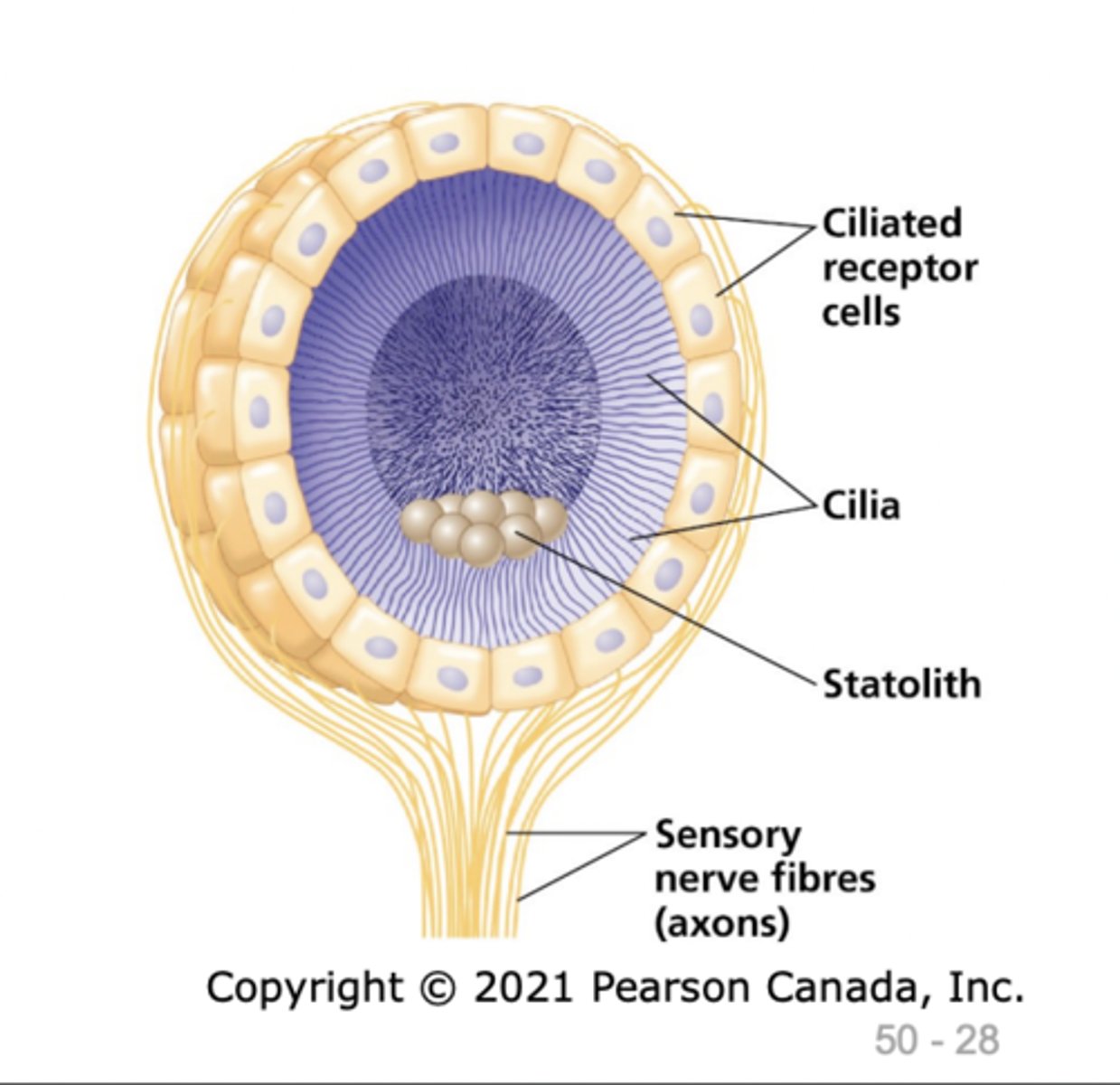
what are statoliths?
starch grains with in statocytes
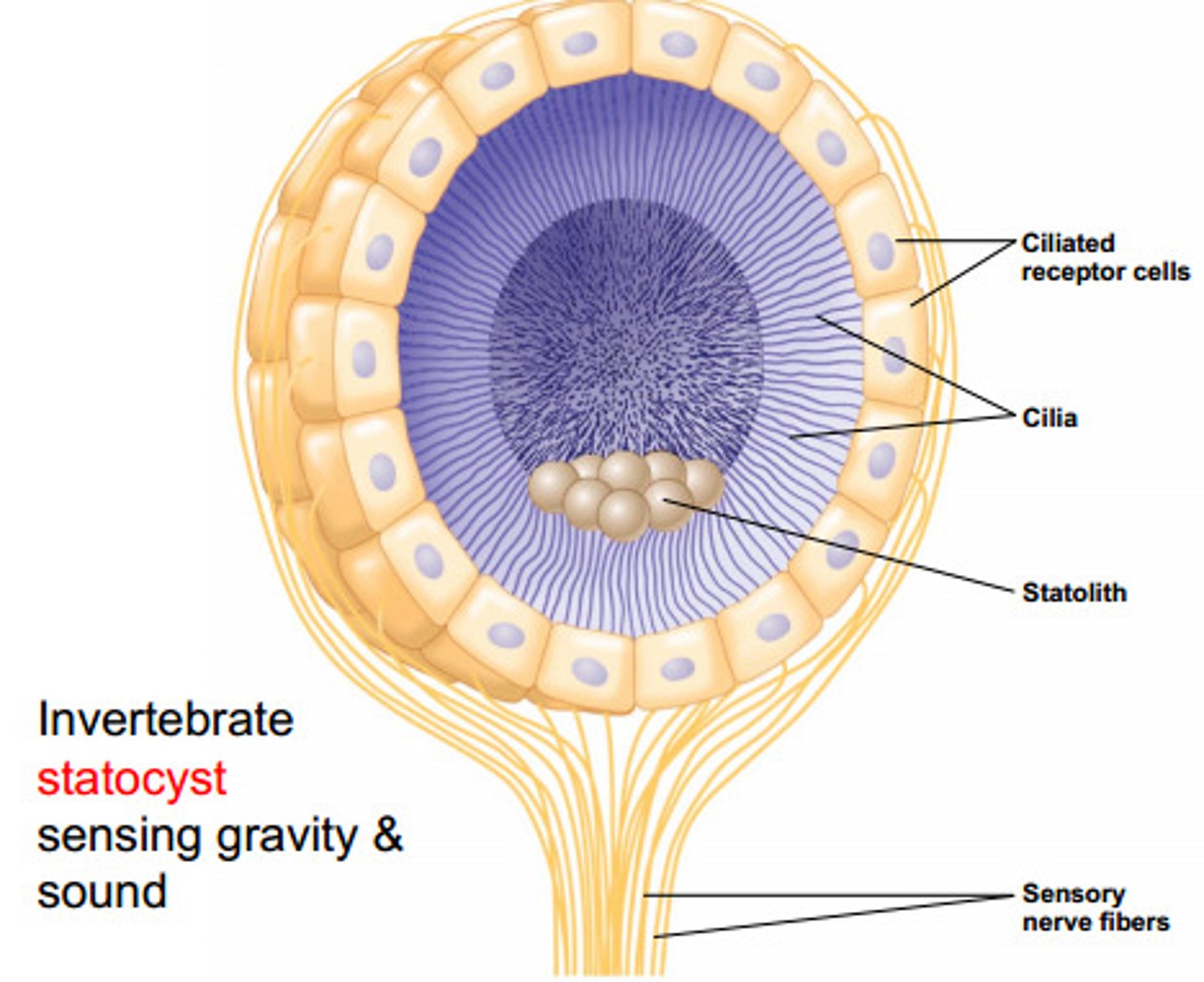
what are the 5 basic plant hormones?
auxin, cytokinin, abscisic acid, gibberellin, ethylene
what is auxin?
apical dominance, cell elongation, cell suppression
what is cytokinin?
activate cell division, dormant buds
what is abscisic acid?
involved in the stress response
what is gibberellin?
involved in seed germination
what is ethylene?
fruit ripening
what happens in seed germination?
1) embryo takes in water & swells; 2) embryo secretes gibberellin into the aleurone layer, and enzymes are produced 3) enzymes move into the endosperm; 4) enzymes digest the endosperm to provide nutrients for them embryo
what is etiolation?
difference in development when seedlings are grown in the dark - less complex-looking; not green/tan-beige-yellow leaves are not developed
what are the 5 basic plant responses?
tropic, nastic, morphogenic, all or none, & dosage
describe tropic plant response.
permanent, growth associated with a stimulus (toward-positive; away-negative; at an angle)
describe nastic plant response.
temporary, non-growth associated with a stimulus
describe morphogenic plant response.
change in the development or quality of a plant
describe all or none plant response.
a response is only present after a threshold is met
describe dosage plant response.
dependent response that depends on the dosage
what is phototropism?
plants bending towards the light (first studied in oat tip)
what is gravitropism?
roots bending down toward gravity
what is apical dominance?
terminal bud produces auxin that suppresses the growth of axillary buds
what are the 2 types of fruit ripening?
climacteric fruits & non-climateric fruits
describe climacteric fruit.
ethylene involved in ripening (bananas, tomatoes, apples)
describe non-climacteric fruits.
ethylene is NOT involved in ripening (cherries, grapes, oranges)
what are the parts of fruit ripening?
color, texture, taste, size, and smell changes
what are the 2 basic types of reproduction?
asexual and sexual
what are some advantages of sexual and asexual reproduction?
in sexual, they are genetically different & in asexual, 1 parent involved (quicker)
what are disadvantages of sexual and asexual reproduction?
in sexual, 2 parents are involved & in asexual, no genetic diversity
what is vegetative propagation?
plants seeds out a runner along the ground that can form a new plant (strawberries)
what is the cell cycle?
life cycle of the cell from one cell division to the next
what are the 3 parts of the cell cycle?
interphase, cell/nuclear division, and cytokinesis
what is interphase?
cell growth, copies DNA
what is cell/nuclear division?
divide the DNA
what is cytokinesis?
divide the cytoplasm
describe the interphase.
longest part of the cell cycle; GAP 1 (G1), SYNTHESIS (S), GAP 2 (G2)
what is gap 1 (G1)?
where the cell grows and make proteins
what is synthesis (S)?
when the DNA is copied
what is gap 2 (G2)?
all growth, final preparations for cell/nuclear division
what are the 2 options of cell/nuclear division?
mitosis & meiosis
describe mitosis.
occurs in the body cells; associated with asexual reproduction; 4 phases: PMAT
describe cytokinesis.
the division of the cytoplasm
what is a chromatin?
DNA and protein
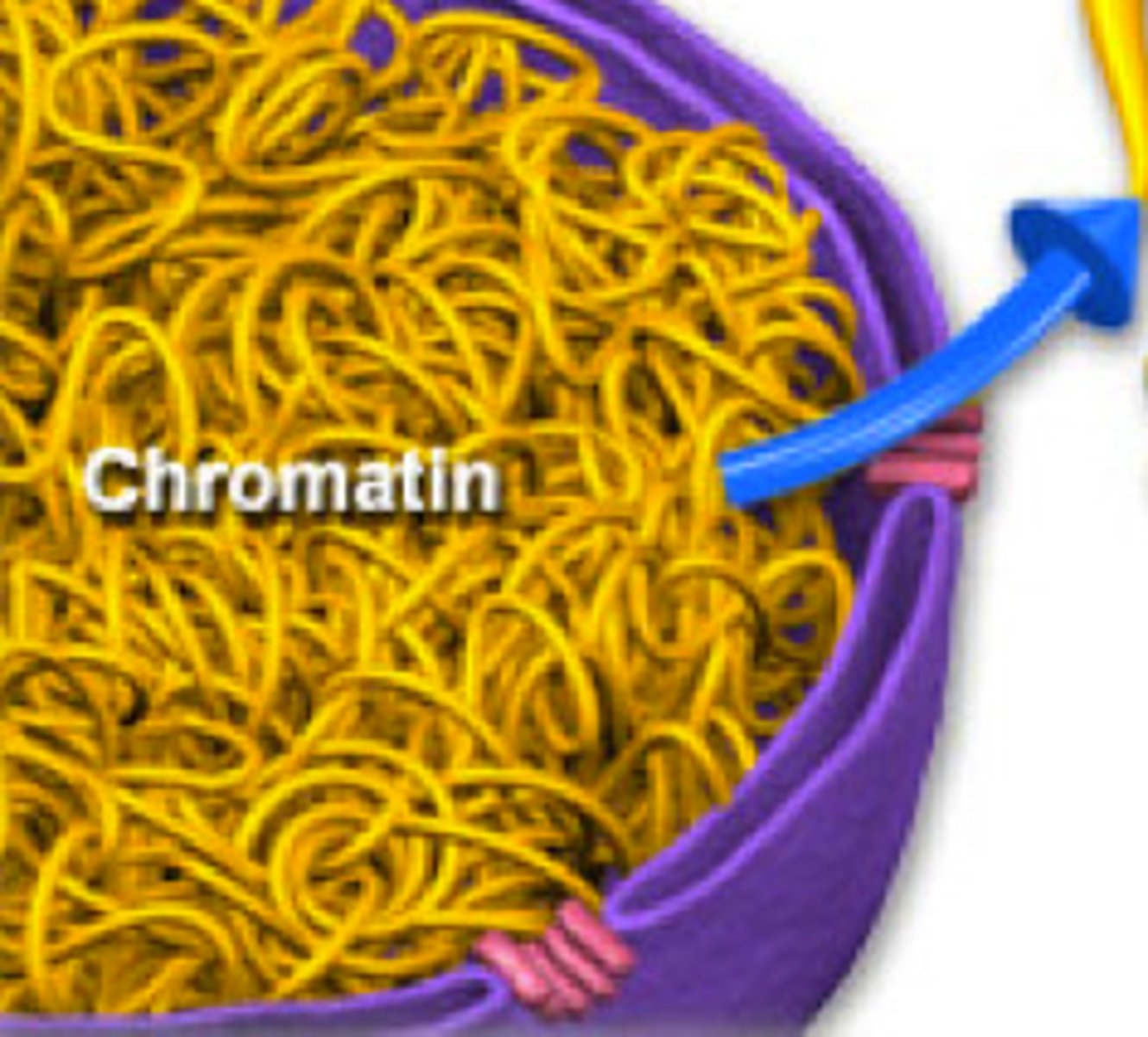
what is a chromosome?
condensed chromatin
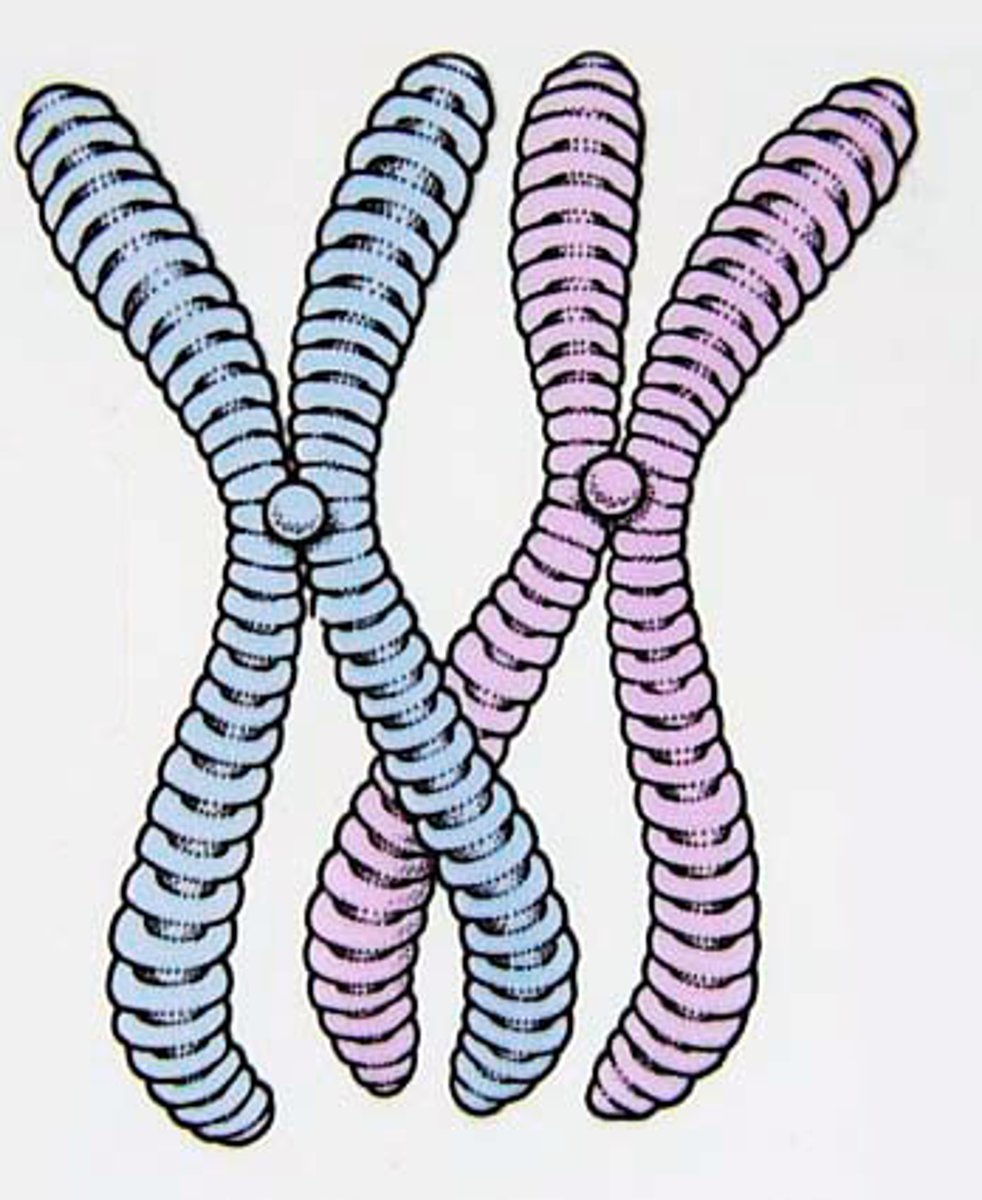
what are sister chromatids?
duplicated chromosomes
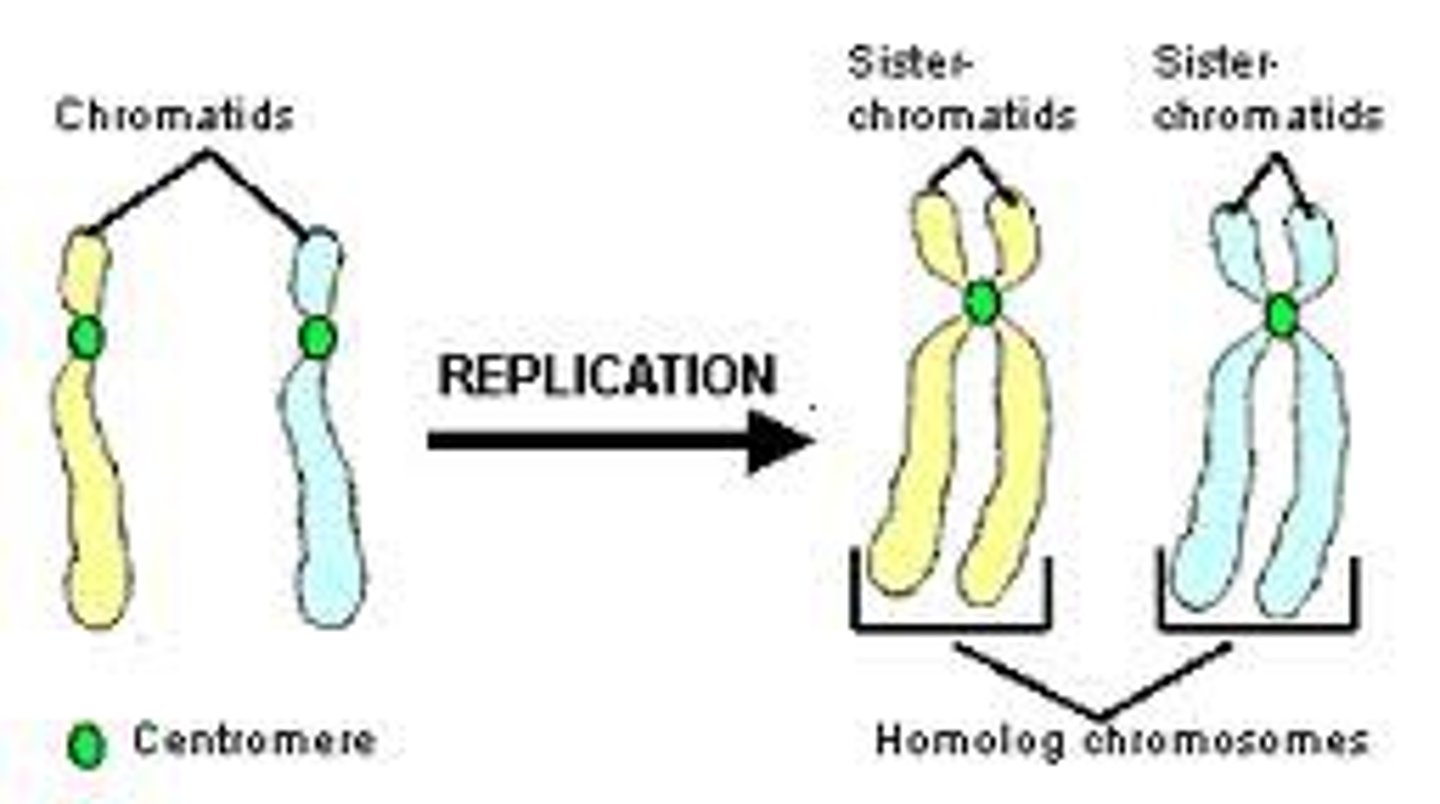
what is a diploid?
2 complete sets of chromosomes (2n=46)
what is a haploid?
1 complete set of chromosomes (n=23)
what are the 4 phases that are a part of mitosis? (PMAT)
prophase, metaphase, anaphase, and telophase
what happens in prophase? (mitosis)
1) chromatin condenses so x-shaped sister chromatids are easily seen; 2) nuclear envelope begins to break down; 3) nucleolus degrades; 4) spindle begins to form
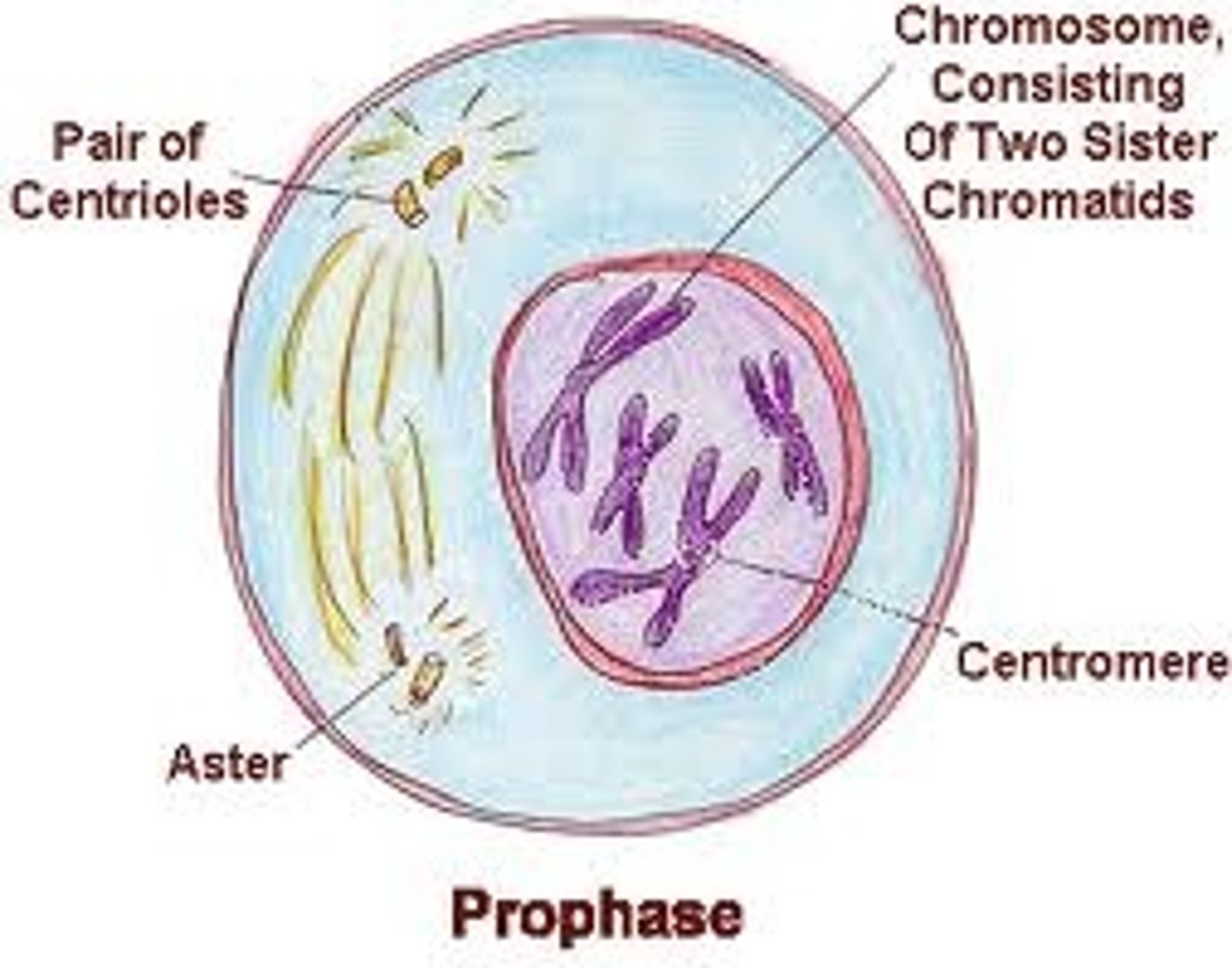
what happens in metaphase? (mitosis)
sister chromatids attache to the spindle and line up in the middle of the cell
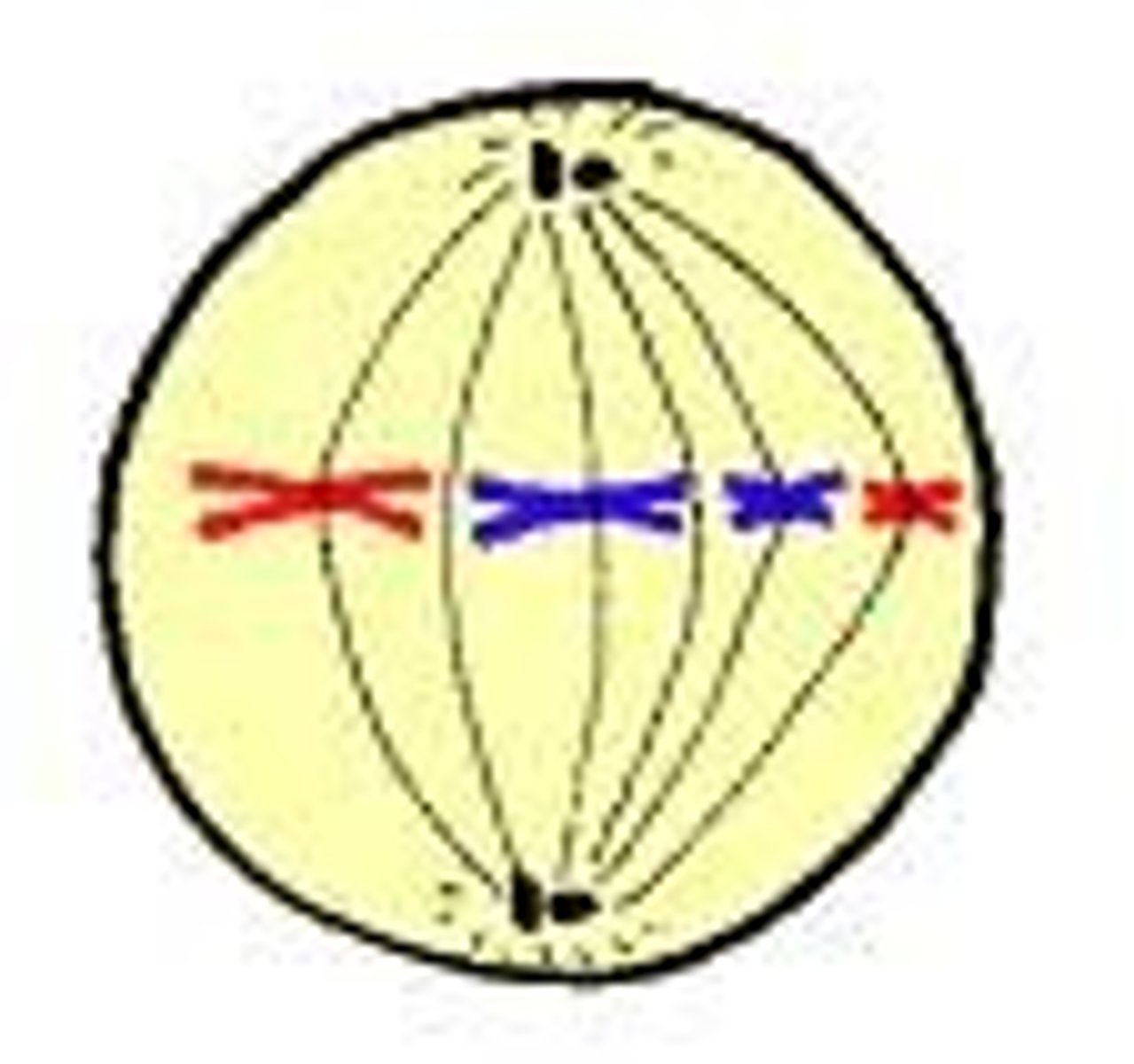
what happens in anaphase? (mitosis)
sister chromatids are separated and are now called chromosomes
what happens in telophase? (mitosis)
1) chromosomes unravel into chromatin, 2) nuclear envelopes reappear, 3) nucleoli reappear, 4) spindle breaks down

describe the cytokinesis. (after mitosis)
division of the cytoplasm and uses a cell plate
what is meiosis?
occurs in reproductive cells, reduces the number of chromosomes by half, associated with sexual reproduction
describe meiosis 1.
the separation of homologous chromosomes

describe meiosis 2.
separate x-shaped structures

describe prophase one. (meiosis 1)
homologous chromosomes pair up and a cross over occurs
describe metaphase 1. (meiosis 1)
homologous chromosomes line up in the middle of the cell
describe anaphase 1. (meiosis 1)
homologous chromosomes are separated
describe telophase 1. (meiosis 1)
amount of DNA is halved
what is cytokinesis 1. (after meiosis)
division of the cytoplasm and 2 daughter cells with half the DNA are formed
describe prophase 2. (meiosis 2)
spindle starts forming, nuclear envelopes break down, nucleoli degrade, DNA condenses in the form of X-shape and structure
describe metaphase 2. (meiosis 2)
DNA lines up in the middle of the cell
describe anaphase 2. (meiosis 2)
DNA is separated (no longer x-shaped)
describe telophase 2. (meiosis 2)
spindle breaks down, DNA unravels into chromatin, nucleoli reappear, and nuclear envelopes reappear
what is cytokinesis 2? (after meiosis 2)
division of the cytoplasm, 4 cells with half the amount of DNA form the starting point, genetically different
what is the alternation of generations?
flip between the sporophyte generations and the gametophyte generation
what is a sporophyte?
a diploid that produces spores
what is a gametophyte?
a haploid that produces gametes
if you start with something and end with ________= mitosis
the same thing
if you start with something and end with ________= meiosis
something different
mitosis or meiosis: gametophyte (haploid)-----> makes gametes/sex cells (haploid)
mitosis
mitosis or meiosis: egg (haploid) + sperm (haploid) -----> zygote (diploid)
meoisis
mitosis or meiosis: zygote (diploid) -----> sporophyte (diploid)
mitosis
mitosis or meiosis: sporophyte (diploid) ---> makes spores (haploid)
meiosis
mitosis or meiosis: spores (haploid) ----> gametophyte (haploid)
mitosis